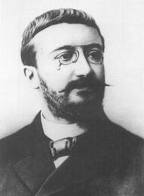In 1905 Alfred Binet (1857-1911) commonly known as the “father” of IQ testing, developed techniques to assess intelligence in primary grade children who were not successful in normal classrooms.
Binet chose a series of 30 short tasks with simple instructions, that related to everyday problems of life. Examples of these tasks are:
- name parts of the body
- compare lengths and weights
- count coins
- assess which of several faces is “prettier”
- name objects in a picture
- define words
Binet then compared the tested child’s results against a norm of “average” children and assigned a mental age to the subject.
He recognized that a test could be intimidating. Binet recommended that: “The examination should take place in a quiet room… […]It is important that when a child sees the experimenter for the first time, he should be reassured by the presence of someone he knows, a relative, an attendant, or a school superintendent. […]If he refuses to reply to a test, pass to the next one, or perhaps offer him a piece of candy; if his silence continues, send him away until another time.”
Imagine the circumstances under which most mental tests would have been administered to Native Americans–who didn’t understand English, or had a different cultural notion of “pretty,” or perhaps had never counted coins. Confused, perhaps intimidated or frightened, many would have been found “defective” by their examiners.
_________________________________________________________
